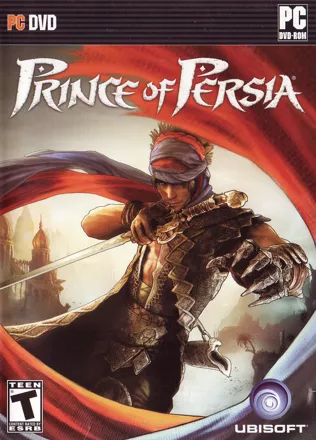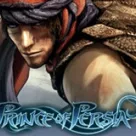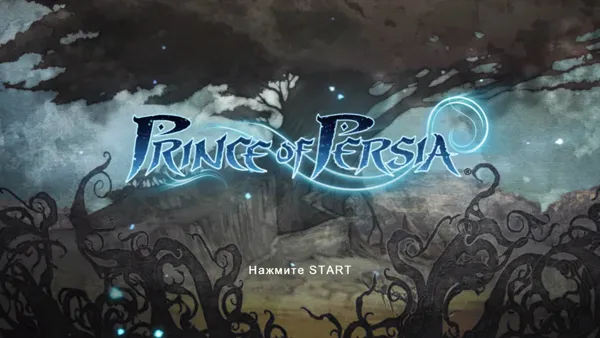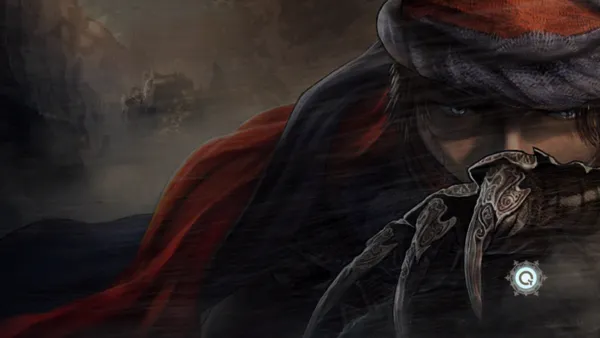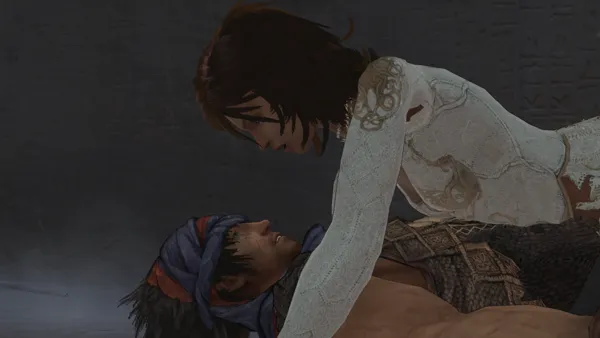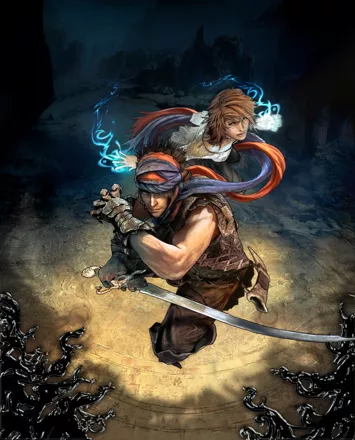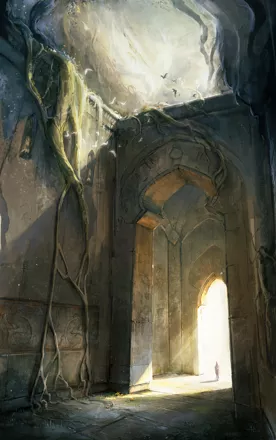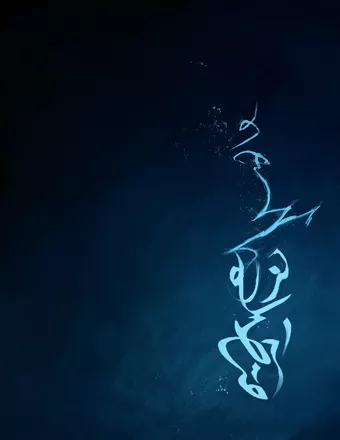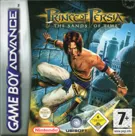Prince of Persia
-
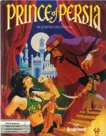 Prince of Persia
(1989 on
Apple II, 1990 on
DOS,
PC-98...)
Prince of Persia
(1989 on
Apple II, 1990 on
DOS,
PC-98...)
-
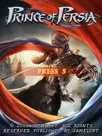 Prince of Persia
(2008 on
J2ME,
Windows Mobile, 2009 on
Android)
Prince of Persia
(2008 on
J2ME,
Windows Mobile, 2009 on
Android)
-
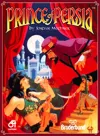 Prince of Persia
(2011 on
Commodore 64)
Prince of Persia
(2011 on
Commodore 64)
-
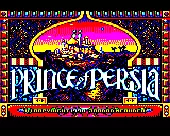 Prince of Persia
(2018 on
BBC Micro, 2021 on
Atari 8-bit)
Prince of Persia
(2018 on
BBC Micro, 2021 on
Atari 8-bit)
Description official descriptions
Prince of Persia once again resets the timeline of the series and marks the start of a new trilogy with the Prince on the search for Farah, his donkey, which is loaded with treasures beyond imagining. But after a sandstorm he falls down into a canyon and meets Elika, a princess with magical powers. She's being hunted by the army of her father and has to make her way to the temple beneath the Tree of Life.
But they come too late. After a brief fight against her father, he breaks the seal and by doing so unlocks the prison chamber that was kept closed by the powers of the Tree of Life. The inhabitant of that prison? Ahriman - God of Darkness. Creator of the darkness of space and the first to unleash envy and hate. Back in the days he was not satisfied with keeping only one half of the universe and after a fierce battle against his brother Ormazd, God of Light, he almost won. In a last attempt Ormazd successfully lured Ahriman into the Tree of Life, condemning him to a thousand years of pain. But Ahriman was only waiting. Waiting and planning and now that he is free, he and his minions are beginning to claim back what they lost and the only two people on the world to stop them are the Prince and Elika.
The basic gameplay remains the same as in the previous trilogy with the Prince engaging in sword fighting, wall climbing, spike dodging, puzzle solving, and more, in his quest to save the world. But as opposed to the previous trilogy, the Prince neither can rewind time nor has to fight multiple enemies at a time. Instead he and Elika only face one, strong enemy every time and if the Prince is about to die because of a miscalculated jump or anything similar, she uses her powers and sets the Prince back to the beginning of the jumping puzzle. That is not the only thing she does. By command of the player, she also helps in fights, allows him to jump further distances by giving him a little push in the back in mid-air and shows which way to go next. Elika is also the key to bring the Tree of Life back to full strength. But to do so, she needs so-called "Seeds of Life" that are scattered all around the levels. If the player has collected enough of these, Elika will also become stronger.
Besides the enemies being stronger, more intelligent and having more special abilities, the fights play similar to the previous iterations of the series with the Prince slashing away at enemies with his sword or his gauntlet to produce powerful combos. The gauntlet also allows the Prince to slide down from solid rocks safely to the area below. The game features Quick Time Events when an enemy got a hold on the Prince and uses a cel-shaded and heavily stylized look for the characters.
Spellings
- Принц Персии - Russian spelling
- 新波斯王子 - Traditional Chinese spelling
Groups +
- 3D Engine: Scimitar
- Games made into comics
- Games with post-credits scene or gameplay
- Japanese PlayStation 3 games with full English support
- Japanese Xbox 360 games with full English support
- Middleware: Bink Video
- Middleware: FaceFX
- Physics Engine: Havok
- PlayStation 3 Essentials Range releases
- PlayStation 3 Platinum Range releases
- Portability Engine: Cider
- Prince of Persia series
- Software Pyramide releases
- Ubisoft eXclusive releases
- Visual technique / style: Cel shaded
Screenshots
Promos
Videos
See any errors or missing info for this game?
You can submit a correction, contribute trivia, add to a game group, add a related site or alternate title.
Credits (Windows version)
645 People (629 developers, 16 thanks) · View all
| Senior Producer | |
| Producer | |
| Creative Director | |
| Associate Producer | |
| Art Director | |
| Art Production Manager | |
| Animation Artistic Director | |
| Animation Production Managers | |
| Lead Programmer | |
| Lead Gameplay Programmer | |
| Technical Directors | |
| Lead Game Designers | |
| Narrative Director | |
| Level Design Director | |
| Level Design Production Manager | |
| Lead Sound Designer | |
| Lead Camera | |
| Lead QA | |
| Production Manager | |
| Project Closer | |
| [ full credits ] | |
Reviews
Critics
Average score: 81% (based on 119 ratings)
Players
Average score: 3.9 out of 5 (based on 84 ratings with 4 reviews)
The New Adventures of Old Prince
The Good
Cartoonish but great visuals
Simple gameplay
Open-world setting
A great, lengthy story
The Bad
Lack of challenge
Some combat and camera issues
The Bottom Line
Jesus, we've really missed playing Prince of Persia. I bet many of you people have as well. This game is like a whole new chapter for the saga more than a return, and it packs lots of surprises. OK, the visuals are cartoonish, but they are simply great. The gameplay is simple, and it doesn't take much time to learn the basics. The story is packed with thrills and adventure, and you won't get bored, even for 1 single minute, as the story is pretty much long-term. The only things which put us off was the lack of challenge and the combat/camera issues. Sure, the game isn't that challenging, but it's extremely entertaining. This is a pretty memorable return to Prince of Persia.
PlayStation 3 · by Kaan Cakanisik (5) · 2010
The gameplay fades away parallel to the need of another Prince of Persia
The Good
I think I see a pattern on my reviews. I usually review games when I see them as a good example of some trend in the industry. The new Prince of Persia is a 2 for 1 bargain in this context, game franchising and casual level difficulty. But first things first, not everything is a bad move on the series.
There are at least two features of Prince of Persia 2008 (that's a funny name for a non-sport game, don't you think?) from which other developers could learn. The storytelling is one of them. The most interesting thing of it is that the player can make the protagonist talk whenever he/she wants. By pushing "t" while the characters stand still and there is no danger around, they will start talking. The concept is that the player, through the prince, asks Elika about what is going on, and Elika explains a bit of the background and current events on the place they are. Obviously, if the player asks forever, the situation will look stupid, but this will be the player's fault not the feature's.
In addition, the characters will realistically dialogue about the situation while playing without using cutscenes at all. If somebody has played Kane & Lynch he/she will know that this gives a whole lot of life to the game and makes the player more involve with the characters and their goals.
Prince of Persia is also very beautiful, the artistic direction is something they can be proud of, although, as I will explain, level design ruins the credibility of the world portrayed in the game. More on this later.
Also, a round of applause for Ubisoft for not putting any sort of DRM on this game (not even "DVD on drive" nonsense, 0_0). I would nearly ask you to blindly buy this game just because of this, considering the state of the art in the matter, but the game is actually a very bad one.
The Bad
(Note: I didn't finish the game out of boredom.)
Let's begin with a review of the history of this game series.
Prince of Persia, the first one, I mean, is a classic. And it is a classic basically because it was a great game. It was original, very enjoyable to play, and artistically admirable. After being released for all the systems possible and their dog, Prince of Persia 2 was released in order to capitalize on the first one's success. I haven't played it, but apparently it wasn't that good. Many years later, when 3D graphics were about to take us to paradise on Earth, some guys decided that Prince of Persia should also look nice just by giving it a new dimension and doing everything else wrong. And surprisingly, it failed.
Many years later, Ubisoft realized that a new Prince of Persia could be a good idea now that 3D graphics were mastered. I still consider despicable to keep on putting same names to games that have nothing to do with each other or separated in time by plenty of years, but Sands of Time was too good to criticize it for this. Still, it wouldn't have hurt to call it other way around and start a fresh new series.
So, where are we? After a trilogy on this new prince (you know, every new project starts as a trilogy nowadays, it's a word with high marketing appeal) Ubisoft has decided to do another Prince of Persia game. It has nothing to do with the Sands trilogy nor with the previous games, but, well, you know, it's about money. Ubisoft is not evil, everybody does it, isn't it? Let's put this straight: videogame industry is full of games based on or continuing a previous game that have been developed solely because that previous game was successful, "profitably" successful, that is. Not that series-starting games are developed for more artistic reasons most of the times, but there is a real plague of games with a number or a subtitle at the end of the name that clearly shout us "hey, you!, yes, the stupid one, you liked "Average Uninteresting Game 1"?, we have done a totally unmotivated second part, come and buy it before I get angry and break your legs you piece of..."
Ok, I calm down now, but never forget that it is the industry who tells you what you like and not vice versa.
And the new Prince of Persia is a rather insulting example of this. It has nothing to do with the previous games, but it is an obvious recycling of the last trilogy with some improved graphics thrown at it. Everything looks lacking motivation if compared with Sands of Time. But let's look at the facts.
The new Prince of Persia begins with the prince (who is not a prince apparently) crossing the desert and befriending an escaping girl. Soon it's discovered that she is a princess trying to prevent her father to free an evil god, which he eventually does. Now the prince and the princess have to fight this evil god, nobody knew about before, because, you know, ancient Persia was full of this kind of exotic crap, and everybody had their hairs and clothes waving in the wind.
The Sands of Time trilogy fan (tm) will soon start to feel uneasy as the prince and the following princess parkour around the "beautifully artistic everybody is talking about" scenarios. I said parkour? Well, it should be called something like "magic parkour" as the spectacularly realistic moves of the prince we all have enjoyed in the previous games are gone. Apart from the ability of Elika to just fly around at will, the prince shows some totally absurd movements this time around. For example, now you can walkrun without any momentum at all, just jumping at a wall. And the funniest part of it is that the prince will scratch the wall while doing it, which in real life would prevent you from running more than one step before falling down. Walking through the ceiling is also something that defies classical mechanics (those you learn at high school) and that the prince does without any effort. But the best part is the "Elika button" that serves as a double jump. Every time a normal jump turns out short, the screen goes white and you have to push this button in order for Elika to give you a push with her magical abilities.
The concept behind Elika is actually what differentiates the game from the rest of the series and is the one that ruins it. She accompanies you through the whole game. The temple has chosen her to save the world from Mr. Evil God n. 786 from Persian mythology and has, therefore, given her powers. Basically, she can fly and glows in white. If you remember Sands of Time series, it was a really difficult game, but the designers created the time manipulation dagger in order to give you the ability to rewind your false steps. But this had some limitations, it could only be done various times with the dagger full charged and only around 5 seconds back in time. The game was still challenging, and the feature very original and praised by everybody. In this new game, Elika replaces the dagger but, this time, there is no penalty at all. Every time you fall, Elika rescues you, every time you fall in the darkness (some black stuff that is everywhere) she saves you, every time an enemy is about to stab you, she saves you, etc. Oh!, and enemies cannot kill you at all, the prince feign hurt after the first hit, but that's about it.
This is absurd to the point that, later on, Elika suggests that using her powers tires her, but you can throw your prince into the void as many times as you want with Elika doing her thing all the time without any trace of tiredness. It would be a nice idea to have Elika get exhausted with time, giving a limit to her ability to save you.
Having different difficulty levels would have been a very good idea actually, because the game really feels like playing itself some times. Let's look at the gameplay. Playing the game is like this. Push 'w' (forward button), when you see a gap, press jump button, when you face a wall, press jump button, when you see a wall worn away, push jump button, when you see a ring, push the claw button, when screen fades to white, push Elika button, when you see an Elika special power circle, push Elika button. What if you are in a combat? I never mastered the combos, so maybe I'm missing something, but combats are pretty much like this. Face an enemy, push attack, Elika and claw buttons in a random sequence and the prince will perform a combo, if the block button appears, push the block button, if any of the other buttons appear, push that button. By the way, there is only one weapon in the whole game and combats are only one-on-one. Somebody would call this a downgrade in the series, but not Ubisoft (or maybe they do and don't care). And remember, you are immortal, the prince can only die in a combat if you just close the game because you are saturated of boring, repetitive combat.
Summarizing, the game is a fucking quick time event theme park!! When I had to move these two guys through far distances it was exasperating, my brain didn't even have to think one bit, I felt like a bloody robot pushing buttons while watching the prince walkrunning for the 162th time in the last minute. And when Elika's special powers were unlocked (you know, Persian bullshit super exotic powers, everybody knows about), watching them jumping from one end of the scenario to the other was like hearing the game calling all of my physics teachers a bunch of losers.
I guess not all of you reading this are so concern with realistic parkour but, considering the level reached by the Sands of Time trilogy and that the parkour masterpiece called Assassin's Creed is also an Ubisoft production, this game looks like big joke on all of the work made in this feature until today.
Lastly, I would like to talk a little bit about the famous "beautiful" and "artistic" scenarios in PoO, I mean, PoP (2008). As I said before, it is quite a visual pleasure to play this game, at least at the beginning, but soon the player will also feel uneasy with this. The first thing you notice is that this "Ringland" the princess lives in, has a highly structured shape. The game starts by the temple in front of which lies a desert in a semicircular extension. Limiting this extension there is a small mountain chain at which 4 buildings stand out at equidistant points at the horizon. Each of them are the first sight we have of the four parts of the kingdom (guarded by 4 corrupted characters, OBVIOUSLY). Each of this parts are composed of a circle with four circular scenarios each at equidistant points. At the center of each scenario, a boss fight awaits. And then, a boss scenario (probably circular, never played that far) in each of this 4 parts of the kingdom. Maybe the Persians did like rings and the number 4 to build their Evil God prisons (ask an archaeologist) or maybe level designers of PoP08 are just a bunch of circle-obsessed freaks with only 4 fingers in each hand.
In addition, the player will also have the sensation, sooner or later, that the people living there would use this magical parkour as their everyday mean of moving, as everything is designed to this end. Why are the walls full of rings?, why all the poles?, etc. The silliest detail many players will eventually suffer are the scratches in the walls that are used to visually tell the player to run through them (push jump button quick time event, that is). Every time, and with every time I mean every fucking time, the prince has to run through a wall, this wall will look like dozens of people run through it every day. This really is a good example on how soon did level designers drop realism in this game.
It is also very curious how all of the scenarios in Prince of Persia are embedded high above in circular cliffs. If I get it right, people were supposed to be living here, why would they ever build their houses over 100 meters above the ground? Every scenario is hanging absurdly high on these cliffs. Sands of Time trilogy never needed these tricks in level design, they could at least learn from the series the game supposedly comes from.
The Bottom Line
The only positive thing about this game is its beauty. Both sound and graphics looks like a peaceful painting (a sonorous painting, I guess) to relax into. But the gameplay has suffered a dead wound with respect to Sands of Time trilogy, with the obvious and despicable goal to please the most casual gamers. The saddest thing is that an option to level difficulty is a very easy to implement tool, to please both hardcore and casual gamers, but developers keep doing it wrong most of the times, if they even implement it.
In addition, realism has been totally discarded in this new PoP game. Many people may not care, but those of us who care, and, specially considering this was always an important feature of the series, do have a real hard time playing this. It defies logic even at most basic mechanical level. And the story also doesn't save the game at all. In fact, it looks like a really poor attempt to have a reason to do a new Prince of Persia game.
Windows · by MichaelPalin (1414) · 2009
Understanding Prince of Persia 2008
The Good
Back in 2003 Ubisoft Montreal introduced us to Sands of Time, an attempt to re-invent Prince of Persia, a 2D platformer that broke all molds in the genre way back in the day, bringing it to the 21st century in full 3D glory.
And what a smashing success that was.
Unless you've been living inside an old leather boot with no windows on a dumpster in the dark side of Pluto, chances are you already know about the wacky antics of this new Prince, what with his beautiful animations and his time-rewinding powers and his crazy, physics-defying acrobatics and his running-along-walls and whatnot. To this day, the "Prince of Persia" trademark became sort of a synonym for "The Arabian Nights meets The Matrix".
There are like three or four people in the world that didn't like
In time, two sequels came along, and while several complaints were issued to both in terms of story and artistic direction, there's no arguing that gameplay-wise the series was getting increasingly better with each new title, with the hero gaining more and more freedom of movement, acrobatic abilities and combat techniques.
Since
Surprisingly (for the folks at Ubi anyway) this re-reboot wasn't quite as well received. In fact, it was met with a solid, consistent, almost universally negative opinion across the board, to the point that today there's much more people out there bitching about how much the new Prince of Persia sucks than people who actually played it. Which is unfortunate, because the game does get quite a few things right.
Now, pretty please with sugar on top, I'll ask you to hear me out and try to keep an open mind during the next minutes, and I'll try to tell you how is it that I came to understand -and ultimately love- this "Prince of Persia 2008". Let's go there.
First off, PoP 2008 is visually stunning. You might argue you're not big on cell-shaded graphics, but there's no denying that the overall design, and very especially the design of the overwhelmingly large gameworld shows some of the most stunning, imaginative, drop-dead gorgeous visuals we've seen in quite a while.
And navigating these areas is an experience on its own: There's no way any red-blooded human being could stand indifferent to the exhilarating spectacle that each jumping puzzle becomes. At a certain point in the game, Elika gains the ability to fly across more-or-less short distances, and if you can watch those flights, with our crazy couple rocketing up to the sky, diving until almost hitting the ground and at the very last minute propelling upwards again, all of the while cruising through (and sometimes barely avoiding) gigantic mountains and columns and walls and whatnot, and you can remain indifferent to what you're seeing, then I'm afraid you can't possibly have a soul. Go get an exorcist or something.
While the game progression is absolutely linear, for the first time in the series each area has several paths the player can navigate at will. Doing so has an immediate payoff since there are these "light seeds" strewn about all over the place, and you want to collect as many as you can in order to unlock special powers and a few freebies; but -at least for me- the very navigation was a prize on its own right. I couldn't get tired of watching the protagonist run, fly, swing and jump around the beautiful environments.
So, from a strictly visual standpoint, PoP 2008 is a masterpiece.
Secondly, I don't think the storytelling got the attention it deserved.
As you might know,
It is true, the hero of the new game is a self-absorved fratboy that takes every opportunity to hit on Elika with the cheapest pick up lines imaginable, and she in turn can get so uptight you'll want to rotate the camera around just to make sure she doesn't have a broomstick up her ass; but trust me, as someone that's big enough a fanboi as to having played the entire series over and over again to the point I could almost recite the dialogues by heart, I assure you the unforgettable, adorable characters in
Especially if you're willing to take the time to know them.
You see, PoP 2008 takes it one step further and includes the possibility to trigger short conversations between the characters at the player's will. Some of them will give you gameplay clues, but most serve no other purpose than to teach you about the character's backgrounds, or simply show them slowly build a relationship; more often than not via random, casual dialogues ("OK, enough about me, it's your turn: I want to know about your parents now") and silly games one might get into while briefly stopping to catch their breath or simply trying to alleviate the tension.
This mechanic, giving the player the decision to dig deeper in order to uncover details that, while not necessary to understand the main story, do help fleshing out the gameworld and especially the characters, reminds me of games like
As I see it, these sort of gimmicks are a welcome departure from classic gaming storytelling (i.e: interrupting the flow of gameplay with large chunks of text or lenghty cutscenes), and they not only make games appealing for different playing styles, but also can make a replay all the more enjoyable.
OK, I hear you, enough with the fanboyism already, let's get on the meaty, more controversial aspects of the game once and for all.
The complaints you most likely saw all over the place were always the same, so we'll adress them one by one in a handy list format:
• "Meh, it's so easy it's no match for my 1337 g4m0r sk1lls" - I've been gaming for over 20 years; the only, rare ocassions when I don't beat a game is when I despise it so much I can't be bothered to do so; and I thought the difficulty level was on par with current standards. PoP 2008 is easy, but then I've been bitching about how easy games in general have became for no less than four or five years. With the honorable exception of
• "ZOMG it's a kiddie-friendly piece of shit YOU CAN'T DIE!!!!!!!1111!!1" - This is the most frequent complaint and, unless behind those words there's some elaborated reasoning that escapes me, it's also the less thought-out, blatantly stupidest sentence to be echoed over and over in the history of the written word. Here's the thing: Elika, the female sidekick, is integrated into the gameplay so that, with the press of a button, you can summon her and her oh so magical powers of whatever to give you a little boost in a difficult jump or to lend a hand in combat. At some point during the pre-mating rituals between press, developers and public, someone at Ubisoft merrily explained that Elika would also jump into action by herself whenever the protagonist faced a certain death (like, say, a miscalculated jump), rescuing him at the last minute and thus making it effectively impossible to die. I bet the poor guy is wishing he kept his head stuck up his own ass because, boy, did that statement stir up the beehive.
Now the truth is, while Elika does jump into action whenever you make a bad jump / you get badly beaten up by an enemy, what she does is teleporting you to the beginning of the jumping puzzle you were in / get you away from the enemy, which while does indeed save your life, also forces you to restart the puzzle / gives the creature the chance to recover a percentage of his health. In other words, Ubisoft's whole "effectively-impossible-to-die" stravaganza is nothing more than a slightly original-ish checkpoint system. An alternative to the time-rewinding powers in
You can argue there are too many of these "checkpoints" which makes the game barely challenging, but then we're back in the first point of the list.
• "Dude, gameplay is so simplistic the controller might as well have one single button" - Now we're getting somewhere. This is one point I sort of agree with. The gameplay is undoubtedly simplistic, certainly way more simple than in any of the previous games. Beating a jumping puzzle or a fight basically comes down to pushing the right button at the right moment. Unlike previous installments where you had an insane amount of moves and combos (especially for combat), a lot of actions have been comprised into a single button, and the protagonist will behave differently according to the context he's in. In fact, certain points in the environment have this "magnetic" quality, so that you need to make a really, really bad jump in order to not safely land on the proper spot or grab the proper pillar or ledge or whatever. At times it almost feels like an interactive movie, and then the game throws in a quicktime event and you barely notice it, it fits the flow of the gameplay so naturally.
And I'll tell you something: During my first few hours of playing, I was beginning to hate the game precisely because of this. I was like, "Fuck damn, what am I even doing here? This game pretty much plays itself!!! ò__Ó ". But then I realized that PoP 2008 is a game that mainly aims to offer a visual impact. I realized that complicating the control interface would interrupt the flow of the animation, thus breaking the spectacle. I realized that PoP 2008 is, in short, a game for sightseeing.
Which takes me to the last point: Whenever I discussed this game with someone, the moment I seemed to get the upper hand my opponent would inevitably shut the conversation down with something like ...
• "Look, man, any one of the previous PoP's can whip this one's ass seven ways from Sunday, so there" - ... and that, frankly, is a logic I couldn't argue with. At best, I could argue that PoP 2008 is not strictly worse, it's just different...
And then it hit me: This is not a Prince of Persia.
You see, the game plays only marginally similar to previous installments, the main character is not a prince, and the setting doesn't remotely resemble any real location, Persian or otherwise. Other than the wall-running and the saracen blade, there's virtually nothing to connect this game to the series it supposedly belongs to. Calling this game "Prince of Persia" is just as wrong as if they had done it with, say,
Come to think of it, this game is closer to
And that is the main point of the whole question. In order to appreciate this game, it's mandatory to not think about it as part of the Prince of Persia series, regardless of rebootings or re-rebootings; because, for better or worse, it's something else altogether.
The Bad
Like you already guessed, o clever little thing as you are, I like this game. So much so that where other people see glaring flaws and horrible mistakes, I perceive conscious design decisions that I applaud for the most part. However, that's not to say I don't have a gripe or two.
First, I'm still hovering somewhere between the first and third complaints from the list we just analyzed: The game is definitely too easy for my taste. The fact that this is commonplace in today's gaming market doesn't make it less bad. And while I think that the simplistic gameplay was a right move to keep the animations fluid and uninterrupted, I also think that a little more complexity wouldn't have hurt. I'm all for the sightseeing-oriented gameplay, especially when the sights are as beautiful as these, but man, I want my games to give me some challenge too. At the very least, PoP 2008 needs more -or at least longer- jumping puzzles, and it definitely begs for a more complex battle system.
And while we're at it, more challenging enemies too. Especially the small, regular enemies are impossibly easy: Not only you have the unexplainable chance to prevent them from even showing up, thus eliminating the fight altogether, but more often than not you'll pull a combo that unexpectedly drains 75% of the creature's health, wiping him off before you even know what happened. The enemies do eventually learn to block your attacks as a form of offering a challenge, but in practice this only means that you're limited to using the two or three tougher combos from the list, which was already small to begin with.
I already said I love the visual aspect through and through, I'm in love with everything from concept art all the way to the cell-shaded rendering; but the enemies... Eh... The thing is, the evil in this game comes in the form or some black, oily substance (resembling the Black Cancer from The X-Files) that spreads all over the world, and even the enemies are made of (or covered in) this filthy goo of sorts. The problem is that, this way, enemies (especially the afforementioned regular, wimpy ones) are pretty much a generic semi-humanoid black blob, and adding that to the fact that there are only three or four different types, it feels like someone dropped the ball here.
Finally, the ending. Not the ending itself, but the way you get to it.
No spoilers, but at the end of the game, after one of the most adrenaline-pumping, massively epic boss battles in the history of gaming, a brief cutscene takes place, the credits roll and then the protagonist is faced with a choice. Once he makes his decision (which you have no saying in), you take control of him again and you're required to do a certain thing. In practice, this translates in an impossibly long, mind-numbingly boring walk towards a certain point and then back to where you parted from. This obligatory section has no challenge, no puzzles, no real choice to be made, absolutely nothing. All you're required to do is to hold the stick up for what feels like a hundred years, then push a button, and then hold the stick up again for another century, and then the ending proper takes place. And then the credits roll, again.
I can't explain you how impossibly infuriating this section is. Suffice to say that, as much as I loved the story and as eager as I was to see its conclusion, I don't feel able to give an opinion about the ending because I was so pissed off when it finally happened that I'm not even sure how I felt about it.
I don't know what the fuck they expected to achieve by making this last chore of a scene a playable one, but if the goal was to annoy the player so much that he ends up losing any attachment he had to the story only a few minutes before and thus ruining the overall experience, then congratulations, you've made it. I hope you're happy.
The Bottom Line
I have this theory: Ubisoft thought that by strapping "Prince of Persia" on their newest platformer they would assure a large, eager fanbase right off the bat for it; a safety cushion for sales, if you will. After all, it was a game about a guy with a saracen sword who runs along walls, right? Prince of Persia fans would buy in no problem. Why wouldn't they?
But the plan backfired when fans went in expecting an actual, proper, full-fledged new Prince of Persia that followed the tradition of the series, and they found something completely different; so much so that it even takes some big steps back in areas where the series had been consistently moving forward from one chapter to the next.
I guess it goes to show all marketing people should be put in a tin capsule and shot into the sun.
That said, I think PoP 2008 is a good game. In fact, I think it's a great game. But it's not a Prince of Persia. I can't stress that enough: It's something you need to get inside your head if you ever expect to enjoy it.
Me, once I made my peace with that fact, I discovered a beautiful, breathtaking and imaginative visual experience as we rarely get to see in this day where everyone and their dog will go for the photo-realistic brown-yellowish appearance they like to call "next-gen" (or "current-gen", whatever). Pair those visuals with a beautiful, smooth animation and a simple yet clever and engaging storytelling, and you're in for quite a ride.
Like I said somewhere up there, had they named this game something like Dragon's Lair 2008, it would've been a resounding success.
They might've needed to throw a dragon in there, though.
Windows · by Slug Camargo (583) · 2009
Trivia
Awards
- GameSpy
- 2008 – #5 Xbox 360 Game of the Year
- 2008 – #7 PS3 Game of the Year
- 2008 – Special Achievement in Art Direction Award
Analytics
Related Sites +
-
Prince of Persia
Official website. -
Review: The Mac Gamer
A review of Prince of Persia by The Mac Gamer's Alex McLarty (September 20th, 2009). -
Something Old, Something New
An Apple Games article about the Mac version of Prince of Persia with additional comments from the Creative Director. -
X360A achievement guide
X360A's achievement guide for Prince of Persia.
Identifiers +
Contribute
Are you familiar with this game? Help document and preserve this entry in video game history! If your contribution is approved, you will earn points and be credited as a contributor.
Contributors to this Entry
Game added by Sicarius.
OnLive added by firefang9212. Macintosh added by Zeppin.
Additional contributors: MichaelPalin, Zeppin, Klaster_1, —-, Paulus18950, Patrick Bregger, Starbuck the Third.
Game added December 13, 2008. Last modified March 27, 2025.


